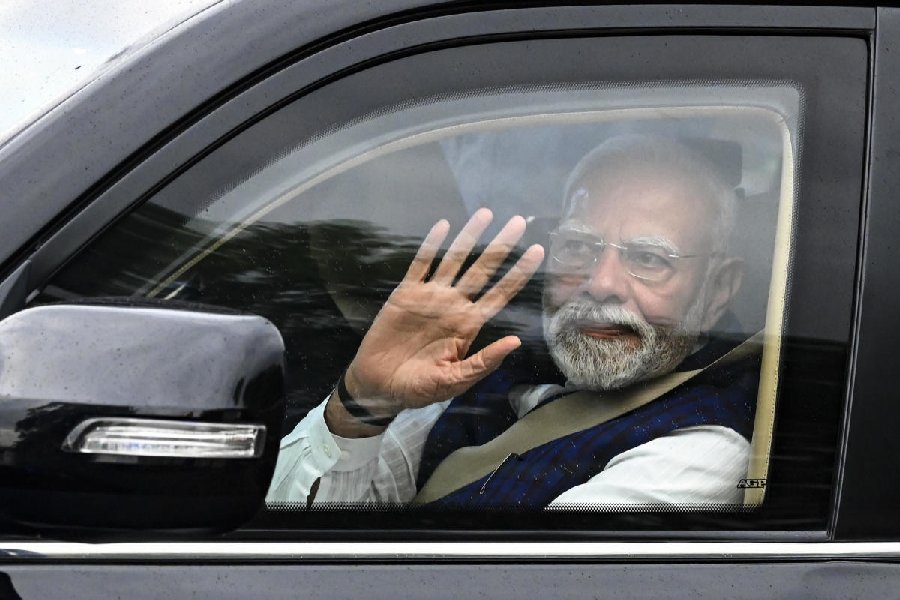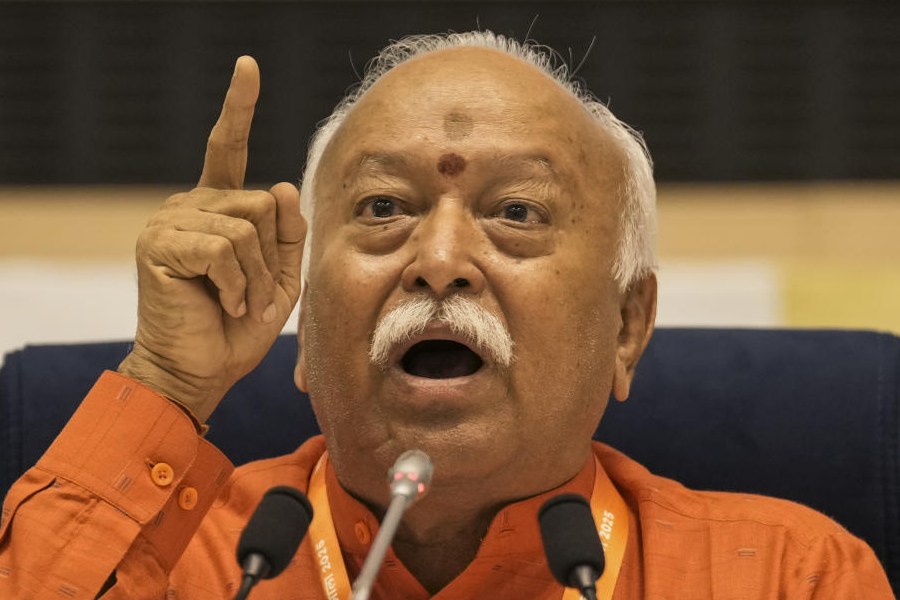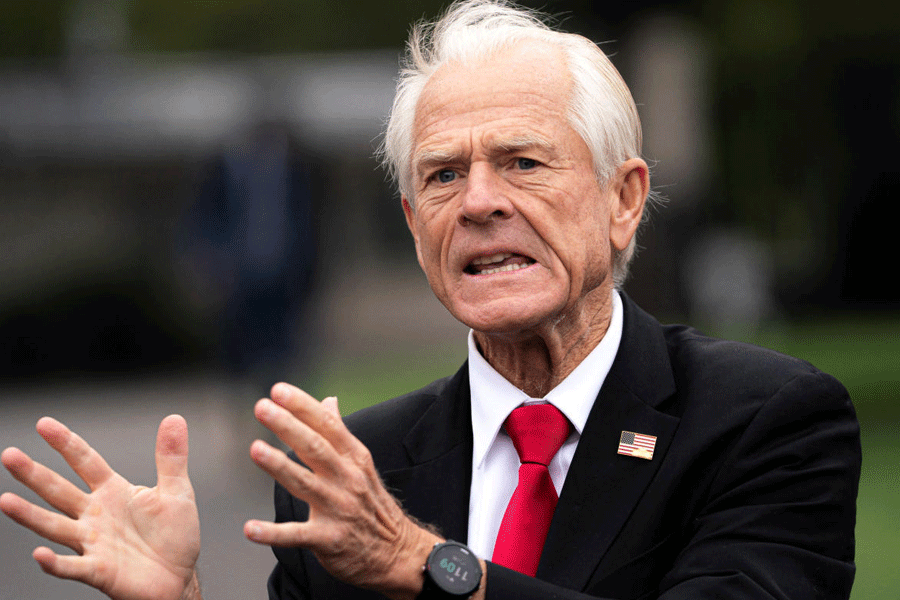 |
One of the most intriguing features of contemporary politics in Karnataka is the recurrence of contrariness. The state, carved as an amalgam of the princely state of Mysore, some districts of the Nizam’s Hyderabad state and chunks of the erstwhile Bombay and Madras Presidency, has an impressive record of defying national trends. Pop sociologists may be tempted to locate the genesis of the state’s ‘counter-culture’ in the influence of the Virashaiva or Lingayat sect, which originated in the 12th century as a revolt against the Brahminical Hinduism that prevailed over the greater part of southern India. Considering that Lingayats have since re-moulded themselves as a modern caste and even embraced mainstream ‘political’ Hinduism, this theory may seem somewhat contrived and far-fetched. Yet, the fact remains that both the voters and the political class of Karnataka have, on just too many occasions, done their own thing.
A potted history of Karnataka’s contrariness may drive home the point. After the Congress split of 1969, Karnataka was among the two major states (the other being Gujarat) that spurned Indira Gandhi and remained loyal to the Congress (O), popularly known as the Syndicate. This, of course, didn’t prevent “Indiramma” from winning all the 27 Lok Sabha seats with a mind-boggling 70.9 per cent of the popular vote in 1971. Likewise, Karnataka defied the Janata Party wave in 1977 and returned Congress candidates in 26 of the 28 parliamentary seats with a vote share of 56.8 per cent.
Regardless of the rebellions by powerful state Congress leaders — S. Nijalingappa and Veerendra Patil in 1969 and Devraj Urs in 1979 — against an overbearing national leader, Karnataka established itself as a near-impregnable fortress of the Gandhi family till the assembly election of 1983. In that year, a ramshackle Janata Party unseated the Congress and put Ramakrishna Hegde at the helm in Bangalore’s imposing Vidhan Soudha. To Indian liberals who had never reconciled themselves to Indira Gandhi after the Emergency, Hegde appeared as the great hope for the future. Yet, in 1984, Karnataka went along with the rest of India and elected Congress MPs from 24 of the 28 constituencies.
That wasn’t the end of the story. The next year, with Rajiv Gandhi at the peak of his popularity, Hegde dissolved the assembly and, against all odds, led the decrepit Janata Party to surprise victory. In the process, Karnataka established a new tradition of states voting differently in assembly and Lok Sabha elections. A defiance of national trends resurfaced again with Bofors and V.P. Singh. Despite the presence of a Janata Party government in Bangalore (or, perhaps, because of it) the Congress did better than even 1984 and won 27 of the 28 seats with 49 per cent of the vote. Again, in the 1999 Lok Sabha election, when the Congress slumped to an all-time low nationally, Karnataka gifted the party 18 of the 28 seats from the state. Likewise in 2004, when Atal Bihari Vajpayee’s National Democratic Alliance suffered massive reverses nationally, the BJP defied the national trend and won 18 of the 28 parliamentary seats from Karnataka. Yet, it failed to win a majority in the assembly election that was held simultaneously.
Karnataka’s penchant for swimming against the tide has inevitably aroused the expectations of both the Congress and the BJP in the ongoing state assembly election. Beleaguered at the Centre by the vagaries of coalition politics and a serious economic dislocation, the Congress is looking to Karnataka as a possible ray of hope. It hopes to capitalize on Karnataka’s slide down the economic league table, partly as a result of the 2004 fractured mandate. As the leading political player — it polled more votes but won less seats than the BJP in 2004 — the Congress hopes that the exasperation with fractious coalitions will propel a resounding vote for stability. The yearning for good governance, the Congress hopes, will subsume the simmering discontent over high inflation and agricultural indebtedness.
For the Congress the stakes are very high. A win in Karnataka (as some opinion polls have suggested) will rejuvenate a tired Manmohan Singh government in Delhi. It is calculated to galvanize Congress activists in Rajasthan, Madhya Pradesh, Chhattisgarh and Delhi which vote in December. There is even a suggestion that a good Karnataka result could resuscitate the Indo-US nuclear deal and trigger an early general election.
It is intriguing that, despite the exceptional political importance of the Karnataka poll, the Congress has chosen to keep its campaign at a very pedestrian level. A fortnight’s election-related stay in Bangalore indicated some grave shortcomings in the Congress campaign. First, the Congress seems to be banking almost exclusively on the clout and resources of its candidates. There is no worthwhile state-level campaign by either local or national leaders. S.M. Krishna seems the only Congress leader of consequence touring the state and the national campaign is entirely dependant on a few symbolic meetings by Sonia Gandhi and Rahul Gandhi.
Unlike Gujarat, where she was in a combative mode, the Congress president’s Karnataka campaign has lacked focus. She has flitted uneasily between stability, development and attacking the BJP on Kandahar. Rahul, on his part has taken his cue from IT honchos, and invoked Karnataka’s special relationship with former chief minister Krishna. As for the Congress’s rarefied print advertisements, the joke in some quarters is that they are aimed at the non-voting classes. The party appears to have lost sight of the fact that while IT is economically important, it is electorally a big zero.
The Congress has one other card up its sleeve. It is proceeding on the assumption that the projection of B.S. Yeddyurappa as the BJP’s chief ministerial candidate will trigger an anti-Lingayat consolidation. The exit poll trends from the first phase of polling suggest that this may well be a paper exercise. The Congress, it would seem, no longer has the capacity to recreate the backward classes alliance crafted by Devraj Urs in 1978.
The BJP in Karnataka was initially written off after a poll by Yogendra Yadav projected it running a whopping 11 per cent behind the Congress. Yadav’s poll corresponded to a belief in Left-liberal circles that the BJP is incapable of winning an assembly election in Karnataka. The reasoning was that, as a ‘Hindi, Hindu’ party, the BJP is out of sync with southern cultural traditions. In the first week of the campaign, the media, for example, were engaged in internal competition to show that the meetings of the Gujarat chief minister, Narendra Modi, were a flop. After the first phase, the tack abruptly shifted to concern over why Modi was getting an enthusiastic response. And after the Jaipur and Hubli blasts, the concern over Modi’s appeal may get shriller.
For the BJP, Karnataka is an important test of its national credentials. It has sought to blend anti-incumbency against the Centre with an indictment of 50 years of Congress rule in Karnataka. The party is mindful of a potential threat posed by an anti-Lingayat consolidation and has sought to counter it by fielding a large number of prominent Vokkaliggas — the other dominant caste around which a counter-mobilization can be effected. The exit poll trends would suggest the strategy is yielding returns.
If the BJP performs well in Karnataka and forms a government, it will reinforce the importance of strong regional leaders in the party. As the epicentre of contrariness, Karnataka may contribute immeasurably to the transformation of the BJP from being a Delhi-controlled party to a more federal outfit.










